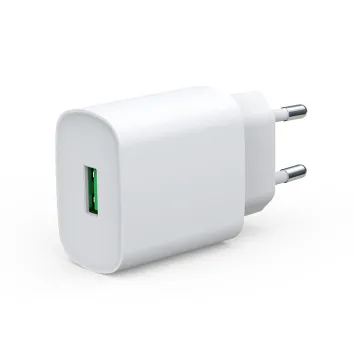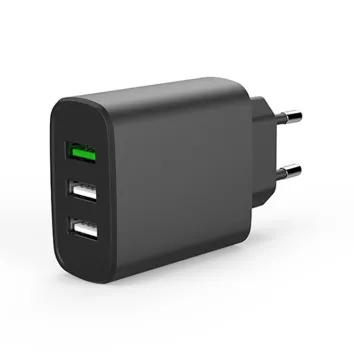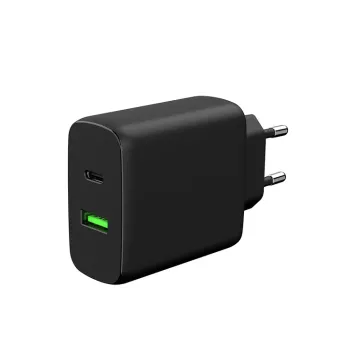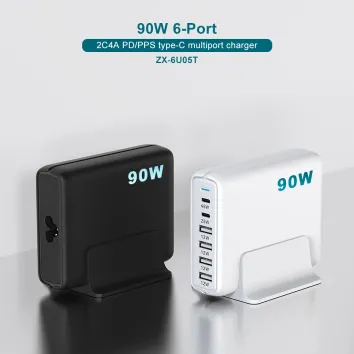Helping You Choose the Right USB Charger for Your Device | ZONSAN
This article aims to shed light on this convoluted subject, offering pragmatic advice to guide you in the labyrinthine task of choosing a USB charger that's just right for your device.
Understanding the Wattage
A quintessential aspect in this endeavor is grasping the wattage of your USB charger. Predominantly, these chargers boast a rating of 5 volts, yet some are designed to offer higher voltages, a feature engineered for rapid charging. Delve beyond mere voltage; ensure that the charger you eye can deliver ample current, a necessity for swift charging of mobile devices.
USB chargers, typically emblazoned with specifications like 5V⎓3A, 9V⎓3A, etc., unveil a spectrum of voltage and current combinations, each dictating the output power. Take, for instance, a 5V⎓3A charger, which flaunts an output power of 15W.
Tailoring Wattage to Device Needs
For Smartphones and Tablet Computers:
1. Smartphones: The basic charging requirement for the majority of iPhone and Android phones hovers around 5W (5V⎓1A). However, devices that support fast charging upend this standard, necessitating a minimum of 18W.
2. Tablet Computers: Devices such as the iPad and Galaxy Tab typically demand a charging power ranging from 10 to 12W. Some models, however, are compatible with fast charging and may require up to 30W.
Navigating the Realm of Fast Charging Technology
Fast charging technology, an intricate web of options like Power Delivery (PD), Programmable Power Supply (PPS), and Quick Charge (QC), offers varied wattage support. PD protocol, for instance, spans an output range from 20W to a formidable 140W. PPS adapts well to gradual shifts in current and voltage, whereas QC is synonymous with rapid charging capabilities of up to 100W.
Choosing the Right Wattage
While most smart devices come equipped with a standard 5W charger, this norm is progressively shifting upwards as devices evolve. If your device is impervious to the allure of fast charging or if charging speed is not your primary concern, then a modest 5W or an equivalent minimal power suffices. For high-octane devices, particularly smartphones, a charger with a minimum of 20W is advisable. Laptops, however, demand a more nuanced approach, necessitating a charger anywhere between 30W and 140W, contingent on their specific configurations.
Prior to embarking on the quest for a USB charger, a pivotal step is to ascertain whether your device is amenable to the fast charging protocol. Subsequently, make an informed selection of the appropriate output power, tailored to your needs.
When wading through the myriad choices of USB chargers, ponder these crucial aspects:
1. Device Compatibility: Ascertain the compatibility of your chosen charger with your device. Despite the ubiquity of USB-C in modern gadgets, older devices might call for specific connectors like Micro USB or Lightning.
2. Charging Speed: The wattage of a charger directly influences its charging speed. For those who prioritize rapid charging, a high-wattage charger is imperative. Consider, for example, contemporary smartphones that can be swiftly powered up with chargers up to 65W.
3. Multi-port Capability: If your charging needs encompass multiple devices simultaneously, a charger with several ports becomes essential. Advanced chargers even boast intelligent power allocation, ensuring optimal charging speed for each connected device.
4. Brand and Quality: Opting for chargers from renowned brands usually guarantees greater safety and reliability. Chargers of inferior quality might fail to provide stable current, potentially damaging your device or posing safety risks.
5. Price vs. Budget: Opting for chargers that embody both high-quality and versatility often means a higher price tag. Yet, these are not mere purchases; they're investments in efficiency and longevity. It's crucial to balance quality with your financial boundaries – a dance of prudence and preference.
6. Portability: For the perpetually on-the-go, the weight and ease of carrying a charger cannot be overstated. Imagine chargers, crafted with portability as their core, a traveler's faithful ally, making frequent journeys less burdensome.
7. Energy Efficiency Standards: Embracing chargers compliant with standards like Energy Star is more than a technical choice. It's a nod to power conservation and environmental stewardship – less consumption, more preservation.
These guidelines illuminate the once intimidating path of USB charger selection. The right charger transcends mere functionality; it becomes a guardian, prolonging your device's life.
In conclusion, the quest for the ideal USB charger, seemingly shrouded in enigma and technical complexity, unravels through understanding. This isn't about casually picking a charger; it's about choosing a companion, a guardian for your device. This journey, riddled with jargon and potential missteps, is a path to a rewarding destination – the certainty of your device being powered efficiently and safely. In the realm of electronics, the right charger is more than an accessory; it's a vital piece that elevates and enriches your technological experience.

Read More

Read More

Read More

Read More

Read More